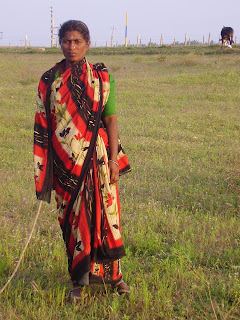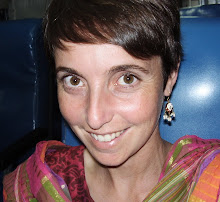
I start my first day on my own in Mysore with breakfast in the hospital cafeteria down the road from PHRI. I have four options, I vaguely recognize one of them, masala dosa. I order it. It's a big crepe, filled with a spicy potato mixture. I'm sure it's exactly what they're feeding the hipsters at Dosa on Valencia Street on Friday nights. Here, it's breakfast. It's delicious, and I'm fairly certain I'll have another opportunity to order it tomorrow.
I then head out to explore the neighborhood. After two weeks of traveling in India, I've come to accept that urge to photograph everything is powerful. However, so much simply can't be captured on pixels; the fierceness of driving, the sheer density of billion people, the number of well-behaved children everywhere, the slightly hungover atmosphere that greets us in Mysore at the end of their Dussera festival. Everyone in town wants to know if we've seen "the procession." (We missed the procession, but still got to see the prized, decorated, elephants lazing around the palace grounds.)
A few blocks away I discover my local Hindu temple. It's full of people milling around, has it's own drum group, and background soundtrack playing to an entirely different beat, and a double dose of flashing neon. It's a little bit of Mysore meets a casino in Reno, Nevada.

Later, I wander to the alley next to the temple. Several stands are selling what I would have to

best describe as Indian leis. I've seen these strands of flowers decorating boats, trucks, statues, and the best of the blinged-out auto-rickshaws. I'm sure they have a name, and a religious purpose, and a traditional way of being made. However, at the moment my grasp of Kannada (the local lingo) doesn't extend much beyond "hello" and "goodbye," So these are mysteries I'll have to solve another day. Today, they're bright, colorful, and smell fantastic. I buy one, take it back to my new home.
































